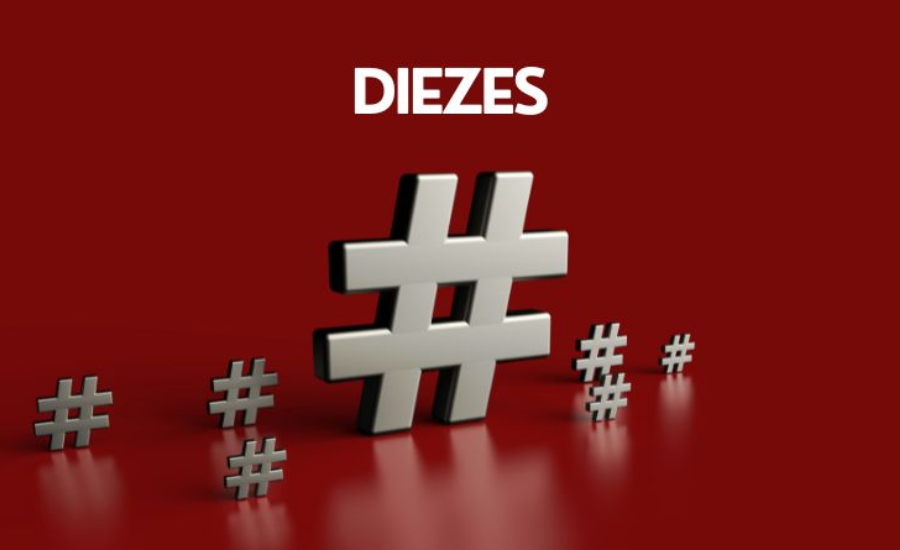The term “dieze” is used in various fields and contexts, each carrying its unique significance. This article delves into the multifaceted concept of “dieze,” with a particular focus on its application in music, and explores its varied meanings in different domains.
What Are Diezes?

In music theory, the term “dieze” (known as “sharp” in English) refers to a symbol used to denote that a half step should raise a musical note. Represented by the symbol “#,” diezes are integral to musical notation and play a crucial role in shaping the pitch and tonal quality of a piece.
When a note is preceded by a dieze, it indicates that the pitch of that note should be increased by one semitone. For example, if the note C is sharped, it becomes C#, which is one half step higher in pitch. This adjustment is essential for creating various scales, harmonies, and melodic nuances.
Diezes are particularly important for musicians to understand as they affect the key signature and overall tonality of a composition. They allow composers and performers to express a broader range of emotions and tonal colors in their music. In practice, diezes appear frequently in sheet music, especially in pieces written in sharp keys or requiring modulation.
Mastering the use of diezes is a fundamental aspect of music theory, enabling musicians to interpret and execute music accurately. Whether one is reading, writing, or playing music, a solid grasp of how diezes function is indispensable for achieving musical precision and expression.
1. Diezes In Music
Definition And Usage
In music, the term “dieze” (also known as “sharp” or “diesis” in English) denotes a musical notation that indicates a note should be raised by a semitone, or half step, from its natural pitch. For instance, when a note such as C is played, applying a dieze to it results in C♯, which is a semitone higher than the original C. This pitch adjustment is crucial for accurately interpreting and performing a wide range of musical pieces.
Notation
The dieze is represented in musical notation by the sharp symbol (♯). This symbol is placed directly before the note on the staff to signal that the pitch should be elevated. For example, when notated as G♯, the note G is played one semitone higher than G natural. The placement of the sharp symbol is essential for altering the pitch of notes and thereby modifying the overall tonal quality of the music.
Importance In Music Theory
Diezes are integral to music theory as they influence key signatures, scales, and chord structures. Their application is fundamental in defining different musical modes and enhancing the harmonic and melodic elements of a composition. Diezes enable composers and musicians to explore a broader range of tonal possibilities, contributing to the richness and complexity of musical expression. Understanding how diezes function is essential for both interpreting written music and creating new compositions, as they play a pivotal role in shaping the musical landscape.
2. Diezes In Other Contexts
While the term dieze is most commonly associated with music, it might also appear in other fields with varying meanings.
Mathematics And Science
In the realms of mathematics and science, the term “dieze” does not hold a standardized or widely recognized definition. Although “dieze” itself is not typically used in these disciplines, there may be similar-sounding terms or symbols that carry specific meanings depending on the context.
For example, in mathematical notation, symbols and terminology are precise and context-dependent, and while “dieze” is not prevalent, understanding related symbols is crucial for accurate interpretation and application.
Linguistics And Language Studies
In the field of linguistics and language studies, the term “dieze” is not commonly employed. However, it could be metaphorically used to describe a notable change or distinction in language. For instance, one might use a similar-sounding term to illustrate a shift in pronunciation, emphasis, or linguistic nuance. Although this usage is less conventional, it highlights how terminology can evolve or be adapted to convey specific changes or features within language.
Technology And Computing
In technology and computing, the term “dieze” itself is not widely used. However, there are similar-sounding terms or symbols within programming and digital systems that serve specific functions or notations. For example, the hashtag symbol (#), which is phonetically similar to “dieze,” is commonly used in programming languages, social media, and data tagging. Despite the lack of direct use of “dieze,” understanding related symbols is important for navigating technology and computing contexts.
3. The Significance Of Diezes
Enhancing Musical Expression
In music, diezes are indispensable for achieving precise pitch adjustments and articulating musical ideas with accuracy. By raising a note by a semitone, diezes enable composers and performers to explore a broader spectrum of tonal possibilities. This capability is crucial for crafting intricate harmonic structures and nuanced melodic lines. The use of diesel allows for greater expressive depth, enabling musicians to convey complex emotions and sophisticated musical textures in their compositions and performances.
Symbolism And Notation
The dieze symbol (♯) is a universal notation that plays a critical role across various musical traditions and genres. Its consistent use in written music facilitates clear communication among musicians worldwide. Regardless of the style or period of music, the sharp symbol denotes a raised pitch, ensuring that musical instructions are easily understood and accurately executed. This universality underscores the dieze symbol’s importance in standardizing musical notation and maintaining coherence in musical performance and interpretation.
Broader Implications
While the concept of a dieze is most prominent in music, similar symbols and terms often signify specific, context-dependent changes in other fields. For instance, in mathematics, science, and technology, related symbols may represent alterations or adjustments pertinent to their respective disciplines. Understanding these applications provides valuable insights into how the notion of modifying or marking changes translates across various contexts. This broader perspective highlights the versatility of symbols and notation systems in conveying precise modifications and maintaining clarity in diverse fields.
FAQs About Diezes
Q1. What is a dieze in music?
In music, a dieze (or “sharp”) is a symbol used to raise the pitch of a note by one semitone. For example, a C dieze (C♯) is a half step higher than C natural.
Q2. How is the dieze symbol represented in musical notation?
The dieze symbol is depicted as a sharp sign (♯). It is placed before the note on the staff to indicate that the note should be played one half step higher.
Q3. Why are diezes important in music theory?
Diezes are crucial in music theory as they influence key signatures, scales, and chord structures. They are essential for creating various musical modes and enriching the harmonic and melodic aspects of compositions.
Q4. Can “dieze” have meanings outside of music?
Yes, while “dieze” is primarily associated with music, it may appear in other fields with different meanings, such as in mathematics, linguistics, or technology, though these uses are less common.
Q5. Are there similar terms to “dieze” in other fields?
In other domains, while “dieze” itself is not frequently used, similar-sounding terms or symbols may represent specific functions or changes based on their context.
Q6. How does understanding diezes benefit musicians?
A solid understanding of diezes enables musicians to accurately interpret and perform music, explore a wider range of tonal possibilities, and effectively communicate musical ideas.
Conclusion
The concept of diezes, widely recognized in music, refers to symbols that raise the pitch of notes by a half step. These symbols, represented by the sharp sign (♯), are fundamental to musical notation and theory. Understanding diezes is essential for musicians, as they allow for precise pitch adjustments that are crucial for accurate performance and composition. The ability to modify notes through diezes enhances musical expression, enabling composers and performers to explore a broader range of tonal possibilities and create intricate harmonic and melodic structures.
Beyond their primary use in music, the term “dieze” and similar concepts may appear in other fields, albeit with less prominence. In mathematics, science, and technology, related symbols might signify specific changes or adjustments, reflecting the broader idea of modification or enhancement. Although these uses are less standardized, they underscore the versatility of the concept of diezes and its relevance across different disciplines.
By examining the various applications of diezes, we gain a deeper appreciation for their role not only in music but also in other areas of expression and communication. This exploration highlights how the fundamental idea of indicating change or adjustment is a common thread linking diverse fields, illustrating the broad impact of diezes on both artistic and technical forms of expression.
Keep up with the newest updates and notifications. Tribune Breaking!







